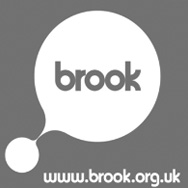Introducing a consistent tone of voice for an IT company

The client: Priority IT, Trowbridge, Wiltshire
Priority IT has over 10 years’ experience of providing expert IT support for small businesses in Wiltshire and beyond. The team help businesses in all kinds of sectors to get the best out of their computer systems.
The need
Priority IT were using a wide range of materials to communicate with their customers and prospects, most of which were too long, too technical, and didn’t work hard enough to convince customers of the benefits of professional IT support. Because these documents had been written by various staff, they lacked a consistent tone of voice and a coherent message that supported the company’s strong, jargon-free brand.
The solution
I rewrote a range of materials used by Priority IT to communicate with their customers, from emails to proposal documents. I also wrote blog posts for the company’s website and case studies that the team could use to promote the work they do for local businesses.
In the client’s words…
“Sarah has transformed the way we communicate with our clients. She has a great understanding of the marketing process, and how the right words can persuade potential customers to take action. She’s worked her magic on everything from case studies to emails, proposal documents and blog posts. I highly recommend her.”
Kieran Thomas, Managing Director, Priority IT
www.priority-it.co.uk
Editing new guidance for sex and relationships education

The client: Brook, London
Established 50 years ago, Brook provides free and confidential sexual health and wellbeing services for nearly 250,000 young people UK-wide, each year. The charity also provides sex and relationships education (SRE) and training courses for professionals working with young people.
The need
Brook, in collaboration with the Sex Education Forum and the PSHE Association, decided to produce supplementary guidance to bring outdated sex and relationships education into the 21st century.
The project involved managing and editing a lengthy document, and incorporating often contradictory comments and feedback from industry experts in a number of organisations. Brook needed someone to take charge of the document, ensuring the key messages remained clear throughout the process.
The solution
I worked closely with the team at Brook, taking charge of the editing process and coordinating the draft to ensure the document never lost its meaning. Though the process involved an incredible 14 drafts and a number of challenges, it never became frustrating.
Despite the document’s length, the resulting guidance was clear, inspiring, and easy to understand. This was a rewarding project with the chance to make a real difference to the lives of young people in the UK.
In the client’s words…
“Sarah is a brilliant copywriter, editor and proofreader. She makes our copy engaging, and ensures it always sounds just right, but more than that – she becomes part of the team and thinks carefully about her recommendations, why she makes them and how they might benefit the organisation.
“I love working with Sarah and I know that Brook’s communications have improved as a result of it.”
Jules Hillier, Interim Chief Executive, Brook
www.brook.org.uk
Sweet tweets…
Thanks to @STEcopywriting who worked on #SREAdvice and did a marvellous job with our 14 – yes 14 – drafts!
Jules Hillier @rosylight
Our new SRE advice wouldn’t have been the success it is without exceptional help from @STEcopywriting – thank you.
Joe Hayman @JoeHaymanPSHE
Working with @STEcopywriting on the #SREAdvice has been a delight. We could not have asked for more! #ff
Brook @BrookCharity
@Simonablake @David_Cameron @PSHEassociation @sex_ed_forum I’ve never read such absolute common sense in all my life! #greatwork
Sharon Munnings @smunnings01
Thanks to @STEcopywriting for brilliant work. I recommend you check her out! #SREAdvice
Simon Blake OBE @Simonablake
Cut the waffle: the benefits of plain English

A short, punchy message increases your chances of being heard above the social media chatter.
So why do so many people use long words and complicated language in their blog posts and updates?
Maybe it’s hardwired from our school days. Teachers’ requests for a 5,000-word essay struck fear into our hearts and we resorted to padding and long words in an attempt to sound more knowledgeable than we really were.
It didn’t work then, and it doesn’t work now.
Using plain English, and clear, concise language can make the difference between winning and losing business, or a potential client choosing your company over a competitor.
So, when every character counts, here are 18 waffle-busting ways to get straight to the point:
| Instead of writing this… | write this |
|---|---|
| as and when | when |
| we will endeavour | we’ll try |
| in due course | soon |
| we are able to | we can |
| in a timely manner | on time |
| additional information | more details |
| in order to | to |
| we have a requirement for | we need |
| regarding | about |
| a significant number | lots |
| in close proximity | near |
| per annum | a year |
| please advise | tell us |
| prior to | before |
| until such time | until |
| please ensure | make sure |
| at the end of the day | ultimately |
| utilise | use |
13 common confusables and how to get them right first time

The English language contains numerous words that sound alike but have different meanings. They’re known as homophones and they’re easily confused when writing.
Here are some of the most commonly confused words, together with tips for getting them right first time. Which trips you up?
Its/it’s
ITS describes something that belongs to IT:
“The dog chased its tail”
IT’S is a contraction of IT IS or IT HAS:
“It’s going to be sunny”
You’re/your
YOU’RE is always a contraction of YOU ARE:
“You’re going to be late”
YOUR describes something that belongs to you:
“Remember your wallet”
They’re/their/there
THEY’RE is always a contraction of THEY ARE:
“They’re going to be late”
THEIR describes something that belongs to them:
“They forgot their tickets!”
THERE is a place. Think ‘here’ + T:
“Over here! No – over there!”
They’ll/there’ll
THEY’LL is a contraction of THEY WILL:
“They’ll be late”
THERE’LL is a contraction of THERE WILL:
“There’ll be trouble”
Who’s/whose
WHO’S is a contraction of WHO IS or WHO HAS:
“Who’s tried the new restaurant?”
WHOSE indicates that something belongs to someone. Try replacing it with WHO IS or WHO HAS. If it doesn’t make sense, use WHOSE:
“Whose restaurant is it?”
Stationary/stationery
STATIONARY means ‘not moving’. Remember AR, as in parked car:
“The train was stationary”
STATIONERY is paper, pens and other office supplies. Remember E for envelopes:
“Please bring your own stationery”
Affect/effect
AFFECT is a verb meaning ‘influence’ or ‘make a difference to’:
“The rain affects my hair”
EFFECT is most commonly a noun meaning ‘result’:
“The effect of the rain is wet hair”
Complement/compliment
COMPLEMENT means complete, match or add a little extra. Remember E for extra:
“That top complements your eyes”
COMPLIMENT praise or a flattering remark, such as, “You have lovely eyes” (think eyes = i).
Always ‘compliments slip’ and ‘with compliments’.
Wonder/wander
WONDER means to ponder, or to be curious:
“I wonder how she got on”
WANDER means to drift around:
“I like to wander around the gardens”
Accept/except
ACCEPT means receive:
“Please accept my apologies”
Except means apart from, or excluding (think EX):
“Have any chocolate you like, except the caramels”
Practice/practise
PRACTICE is a noun – think ICE:
“Have you done your piano practice?” or “We refer to best practice guidelines”
PRACTISE is a verb – think IS:
“You need to practise”
Principal/principle
PRINCIPAL means main or chief. Remember ‘pal’:
“The college principal”
PRINCIPLE is a fundamental truth or rule:
“A matter of principle”
It also means morally correct behaviour:
“A man of principle”
To/too
TO indicates direction:
“I’m going to London”
It also indicates the infinitive part of a verb:
“I’m going to have lunch”
TOO means also:
“Can I come, too?”
It also means excessively:
“It’s too loud!”
8 tips and tricks to improve your writing in just 8 minutes

The English language is full of quirks that can trip you up – and when you’re writing for business, mistakes can cost you sales.
These simple tips will stop you falling flat on your face.
Tip 1
A lot, as well, thank you, no one and all sorts are all two words.
(Unless you happen to be writing about Liquorice Allsorts, which – let’s face it – is unlikely.)
Tip 2
Don’t use here’s (here is: singular) or there’s (there is: singular) when you mean here are or there are: plural.
“Here are tips”, not “here’s tips”.
Tip 3
Too means also (“can I come, too?”) or excessively (“that’s too loud”).
To indicates direction (“I’m going to London”) or shows the infinitive form of a verb (“I’m going to have some lunch”).
Two is always a number.
Tip 4
It’s usually wrong to say you have two choices – you have one choice, with two (or three, or ten) alternatives.
Tip 5
An ellipsis is always three dots – no more, no less (and never a random number just to fill a gap).
Tip 6
Stop confusing you’re and your.
You’re is short for ‘you are’.
Your means belonging to you.
“You’re driving to town in your car.”
Tip 7
Blame pronunciation for this one. Saying could’ve, would’ve, and should’ve often leads to writing could of, would of, should of – which is wrong.
Always write could have, would have, should have.
Tip 8
Use fewer for things you can count, and less for things you can’t. Less food = fewer calories.
Ditto number (for things you can count) and amount (for things you can’t).
